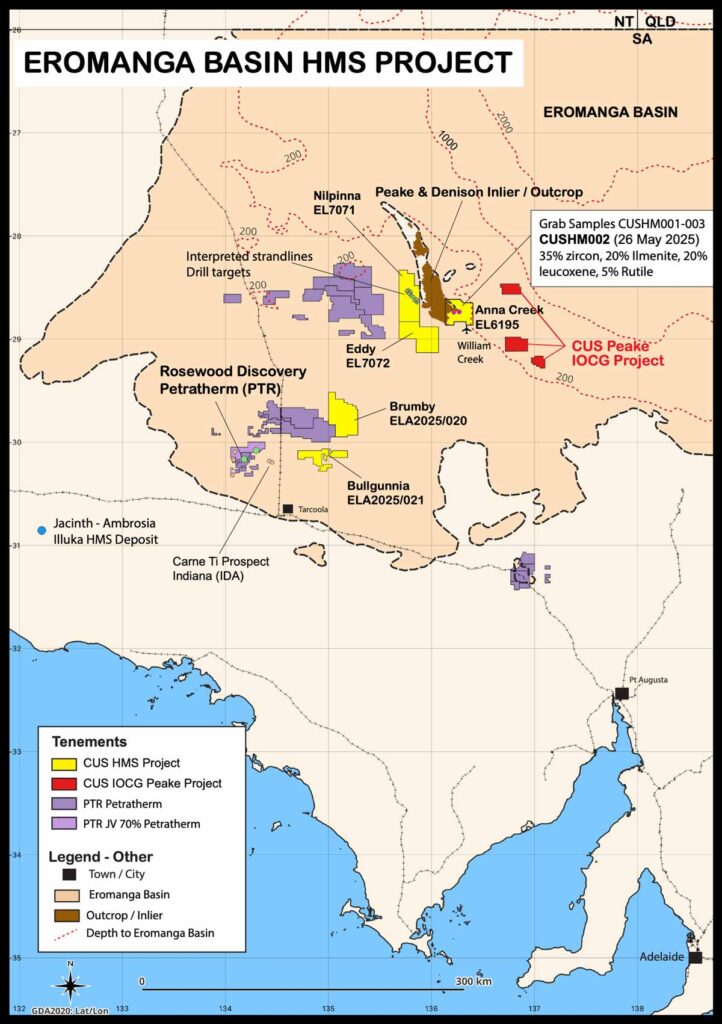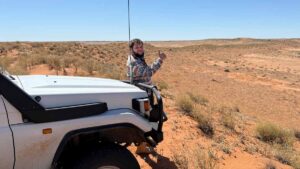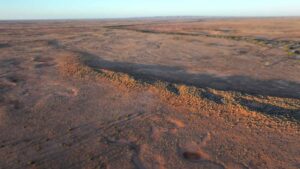
Annual Report (2025)
Altitude Minerals Ltd (ASX: ATT) is pleased to present its Annual Report (2025).
The Eromanga Project spans several thousand square kilometres of the northern part of the Gawler Craton in South Australia. The area gained attention for Heavy Mineral Sands potential after Petratherm’s’ high-grade Rosewood HMS discovery.

In early May, a reconnaissance trip to the Eromanga Basin Project, led by Altitude Minerals’ world-leading HMS expert Ian Warland, collected grab samples that contained high-value zircon and titanium minerals. This high-grade mineral assemblage underscores the potential of this underexplored region.
Assay* highlights of pan-concentrated grab samples include:
• 35% zircon, 20% Ilmenite, 20% leucoxene, 5% Rutile (CUSHM002)
• 25% zircon, 50% Ilmenite, 10% leucoxene, 5% Rutile (CUSHM001)
• 25% zircon, 55% Ilmenite, 5% leucoxene, 5% Rutile (CUSHM003)
• All with low amounts of “trash” minerals
Altitude Minerals swiftly moved to secure its ground position in the region with the successful application for tenements EL7071 Nilpinna and EL7072 Eddy, and additional ground staking further to the west and adjacent to the Petratherm Rosewood HMS discovery. The exploration team is now undertaking further field reconnaissance, mapping and target validation. The team is also working closely with the Arabana People, the traditional owners, to complete a heritage survey and clear the way for an anticipated 4,000m air-core drill campaign set for Q3-Q4 2025.

The Eromanga Basin is known to host significant HMS discoveries, including recent finds by Petratherm (ASX: PTR) and Marmota (ASX: MEU) and highlights the region’s strong HMS potential. Terrain features suggest potential trap sites for heavy minerals along the outcropping Peake and Denison Ranges. The Peake Project area has an extensive thickness of HMS target horizons, host to heavy mineral sand deposits elsewhere. A second tenement area (in application) reveals promising magnetic signatures that may indicate ilmenite-rich strand lines—an exploration model proven in regions like the Murray Basin

Altitude Minerals Ltd (ASX: ATT) is pleased to present its Annual Report (2025).

An update on the exploration work and plans for Altitude’s projects in the Eromanga Basin and Macquarie Arc

New HMS assemblage samples on EL7071 Nilpinna contain high-value zircon and titanium minerals – rutile, ilmenite and leucoxene